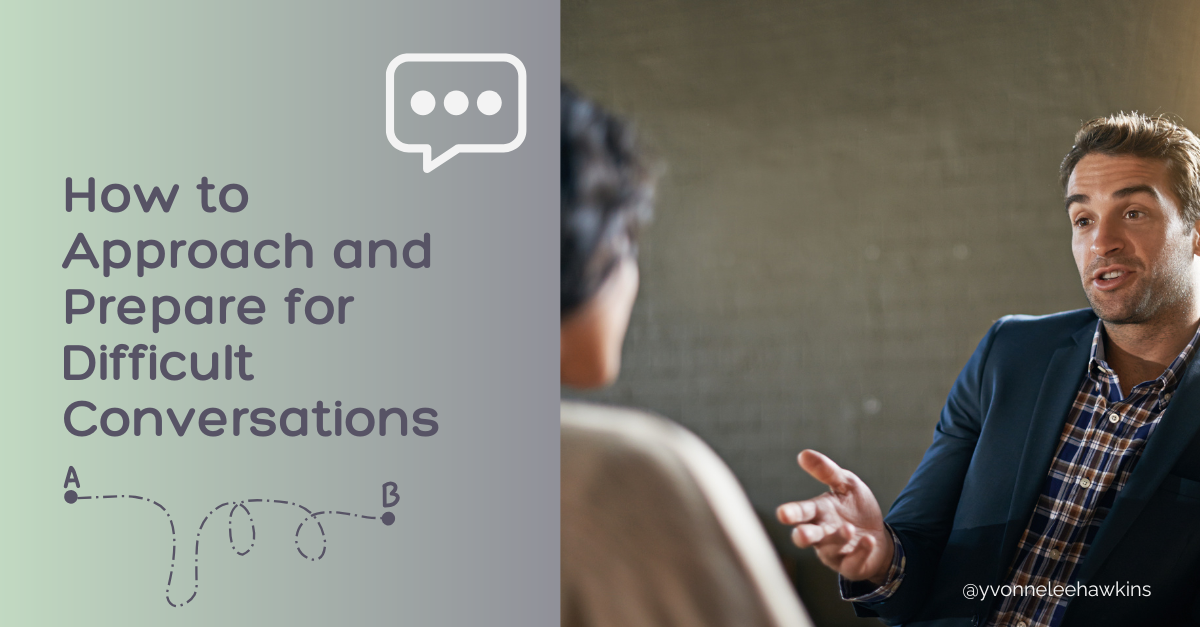How to Approach and Prepare for Difficult Conversations
Difficult conversations are an inevitable part of life. Whether in professional settings, personal relationships, or within family dynamics, confronting tough topics with clarity and confidence can make all the difference. Many people avoid difficult discussions out of fear: fear of conflict, misunderstanding, or damaging relationships. However, with the right approach and preparation, these conversations can become opportunities for growth, deeper understanding, and positive change. In many cases, having difficult conversations early builds a stronger relationship long term.
The Importance of Clarity
One of the biggest mistakes people make in difficult conversations is not being clear about what they want to communicate or the outcome they are wanting. Clarity is crucial because it reduces the risk of misunderstandings and emotional escalation. Before engaging in a conversation, take time to reflect on your thoughts and feelings. Ask yourself:
- What is the core issue I need to address?
- What outcome do I hope to achieve?
- How do I want the other person to feel after our conversation?
- What assumptions am I making about the situation or the other person’s intentions?
Journaling or talking with a trusted friend or mentor beforehand can help clarify your thoughts and emotions. Entering the conversation with a well-defined purpose allows you to remain focused and composed. I encourage you to write these down and take notes.
An example for a session with a direct report might be something like this. “I want to talk to you about something that has been brought to my attention. It might be a bit awkward or uncomfortable, but I want us to have an understanding and want you to leave the conversation feeling clarity and knowing what to do next. Now I might not have all the data points right so please share your input, but from my perspective I have noticed that you are not following through on your commitment to our stakeholders. Some have come to me to complain that they don’t know what is going on. I need you to communicate with them and keep them informed so that our team’s working relationship continues to work well. What has been getting in the way of keeping them informed?”
You might learn that this person has an unmanageable workload, or a mismatch of priorities. Remember to make it a fact-finding mission, not a blame game. Remind them that you are here to help find a solution.
Boundaries vs. Requests: Understanding the Difference
Another key aspect of preparing for difficult conversations is recognizing the difference between boundaries and requests. Understanding this distinction helps set realistic expectations and prevents unnecessary frustration.
Boundaries Direct Your Own Behavior
Boundaries are personal limits that define what is acceptable or unacceptable for you. They do not control others but instead guide your own actions in response to behaviors you find inappropriate or harmful. Boundaries sound like:
- “I will no longer engage in conversations where I am being yelled at. If that happens, I will remove myself from the situation.”
- “I am not available to work past 6 PM because I need to prioritize my health and family.”
- “If you continue to make disrespectful comments, I will end the discussion.”
Boundaries are about protecting your well-being and integrity. They empower you to take responsibility for your own actions without trying to force change upon others. They don’t require others to do anything but to understand that you will do something (like remove yourself) if your boundary is not respected.
Requests Require Someone Else to Modify Their Behavior
Requests, on the other hand, involve asking someone to change their behavior. While you can make a request, you cannot control whether the other person will honor it. Requests sound like:
- “I’d appreciate it if we could have this discussion in a calmer manner.”
- “Could you please let me know in advance if you need me to work late?”
- “I would like you to respect my need for privacy when I’m working.”
While requests can create cooperation and understanding, they require the other party’s willingness to comply. If your request is not met, consider what boundaries you need to put in place to protect your well-being.
There has been a lot on social media about toxic workplaces lately. I have a very direct and definitive approach. First, I would try to assess if it is a culture of toxicity or just a certain team/manager. If the latter, I would try to move or transfer internally. If that is not possible, or it is a whole culture, the best thing you can do for yourself is leave. We too often think, perhaps I can make a difference. While we may be a beacon of light in a sea of darkness, eventually it will wear you down too. The best way to affect change is to remove yourself from the toxicity and find a company, team, and culture that values and respects you. They are out there, and they are looking for someone just like you.
Practical Tips for Navigating Difficult Conversations
Once you have clarity and understand the difference between boundaries and requests, use the following strategies to ensure a productive conversation:
Choose the Right Time and Place
Timing and environment matter. Avoid bringing up tough topics when emotions are high or when the other person is stressed. Choose a neutral, private setting where both of you can focus on the conversation without distractions. One of my leadership mentors often said, “praise publicly, criticize privately.” The same goes for any difficult conversation.
Regulate Your Emotions
Before engaging, ensure you are in the right headspace. Practice deep breathing, grounding techniques, or a short meditation to stay calm. Approaching the conversation with a composed demeanor encourages the other person to do the same.
Use “I” Statements
Avoid blaming language that puts the other person on the defensive. Instead, use “I” statements to express your feelings and needs. For example:
“I feel unheard when I’m interrupted in meetings. I’d appreciate it if I could finish my points before others respond.”
“I feel overwhelmed when last-minute changes are made without my input. Can we work on improving communication?”
Listen to Understand, Not to Respond
Active listening is key. Give the other person space to share their perspective without interrupting. Use phrases like:
“I hear you saying that you feel frustrated because…”
“Can you help me understand what led to that decision?”
Acknowledging their perspective does not mean you agree, but it builds rapport and opens the door for constructive dialogue.
Stay Solution-Oriented
Rather than focusing on past grievances, shift the conversation toward solutions. Ask:
“How can we work together to prevent this issue from happening again?”
“What changes can we both make to improve our communication?”
Accept That You Can’t Control Others
Even with the best preparation, you cannot control how the other person will react. If they become defensive or unwilling to engage, remain calm and reinforce your boundaries. Sometimes, the best response is to step away and revisit the conversation later.
Practice Regularly
Like any skill, navigating difficult conversations improves with practice. Start with low-stakes situations and gradually work your way up to more challenging discussions. Role-playing with a trusted friend can also help build confidence.
Difficult conversations do not have to be feared or avoided. By preparing with clarity, distinguishing between boundaries and requests, and using effective communication techniques, you can approach tough discussions with confidence. The more you practice, the easier it becomes to advocate for your needs while fostering respectful and productive relationships.
Take Action Today:
- Identify a conversation you’ve been avoiding and outline the key points you want to communicate.
- Practice setting a small boundary in a low-stakes situation.
- Commit to using “I” statements and active listening in your next discussion.
With these strategies, you can turn difficult conversations into opportunities for positive change and deeper connections. The sooner you have these conversations, the less likely they will turn into even more difficult conversations later. This is especially true in leading a team or even in a relationship with a partner. The worst thing you can do is avoid the conversation and let the relationship fester. Remember, it doesn’t have to be perfect, just have the conversation with authenticity and the intent to make a positive change. You can’t control how the other person reacts, but you can control how you set expectations. You got this!
***
Did this topic add value to you? Please like and subscribe if you want more topics like this, or DM me. I always love suggestions and feedback!
And if you are too burned out and overwhelmed to even begin to use any of these strategies it might be time to get some help. Find a coach, therapist, or doctor who can help you reverse out of the physical, mental, and emotional symptoms of burnout so you can get back to living in life you love.
Remember, Self-care isn’t selfish…it’s required!
Yvonne Lee-Hawkins, IPHM, is a holistic Leadership and Wellness coach, stress strategist, and writer, who spent 20 years in corporate and leadership functions. When she is not working, she loves to go on nature adventures with her family, in the Pacific Northwest where they call home. You can find out more on her website, or follow her on LinkedIn, Medium, or Instagram.
If you want some help preparing for difficult conversations, or with general wellness, schedule a call here.
Lastly, sharing is caring. If you know someone who would benefit from this, please share it with them!

